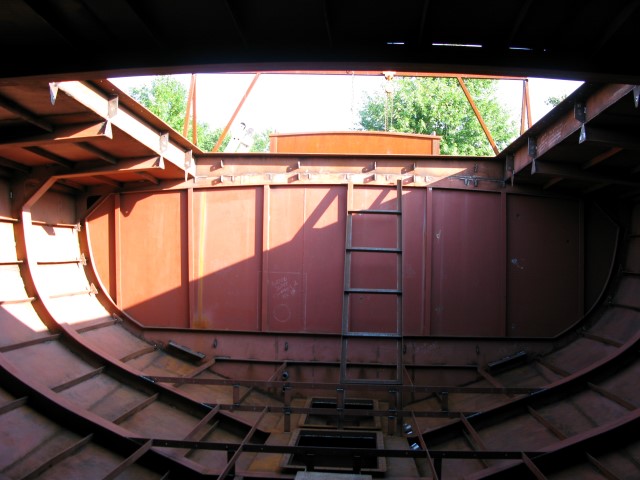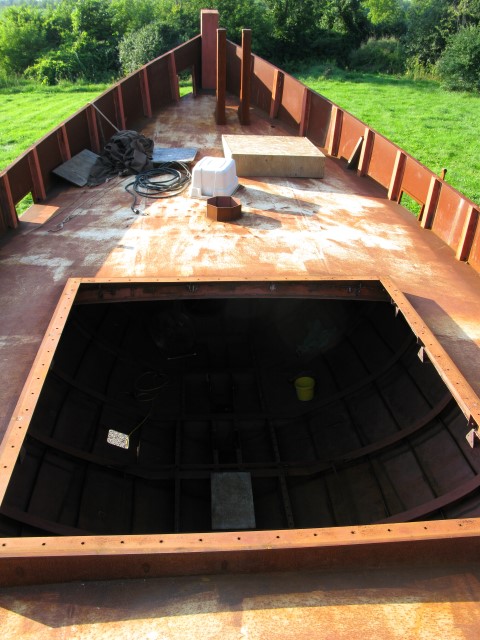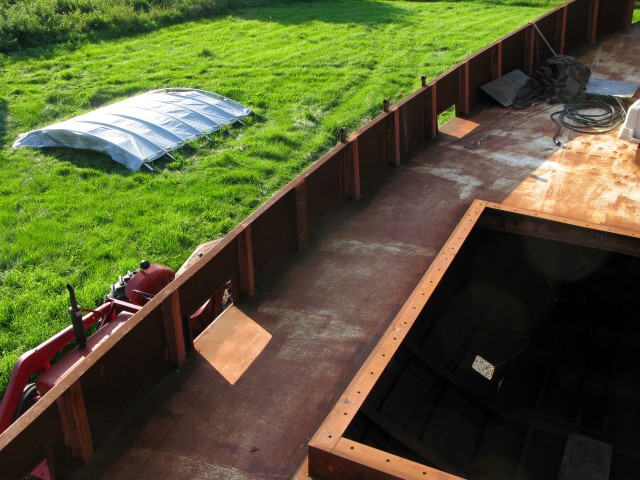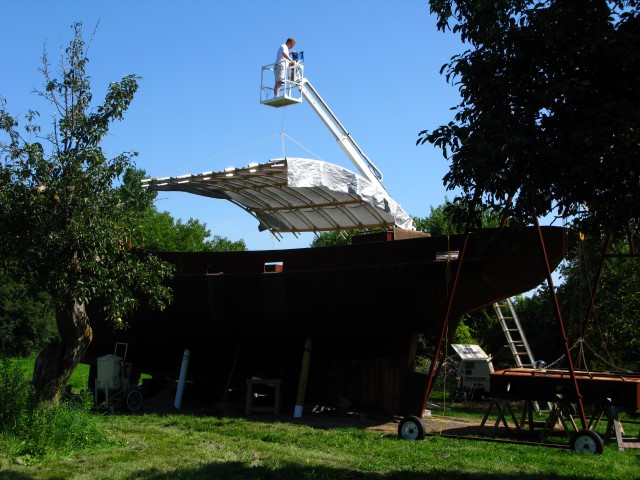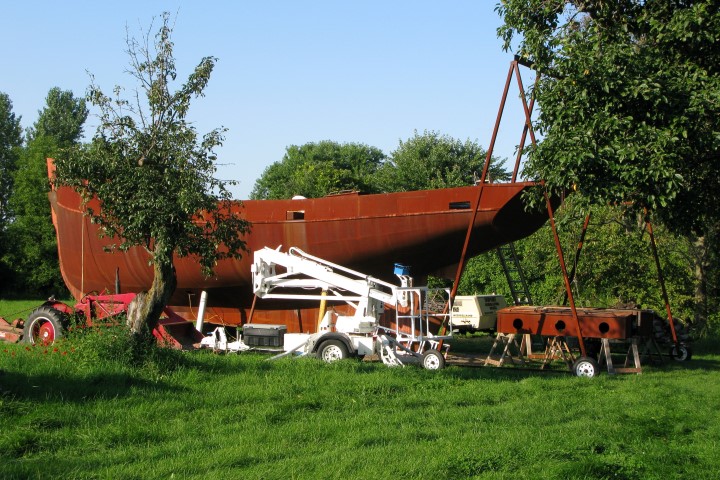
It’s simply too hot to do anything today so I must as well write some more. I realized I didn’t make any mention of how we prepared the boat for the sand blasting and painting phase. Our experience sandblasting the previous boat had been far from a good experience and it was clear, right from the designing stage, that we were going to do everything possible to make the sandblasting of this boat easier.
What had made the sandblasting of the previous boat so difficult?
Non adequate equipment for starters. Hopefully we solved this issue by buying our own gear. I can at least confirm that working with the air fed hood makes it a world of difference compared to a simple respirator under a canvas hood. Otherwise having the flexibility to blast in sections instead of trying to do all at once should be much easier. Lets only wish the compressor doesn’t die on us. Equipment wise we also have a couple industrial fan that we seem to be running all the time, either to cool ourselves or to help air circulation. We also use an old furnace blower which we install over the mast hole to keep air moving threw the boat, it helps with condensation issues, heat and blowing out paint solvents. I’ve had this blower in place for most of the boats construction, it greatly helped eliminate welding fumes and moderating the temperature in my tin can.
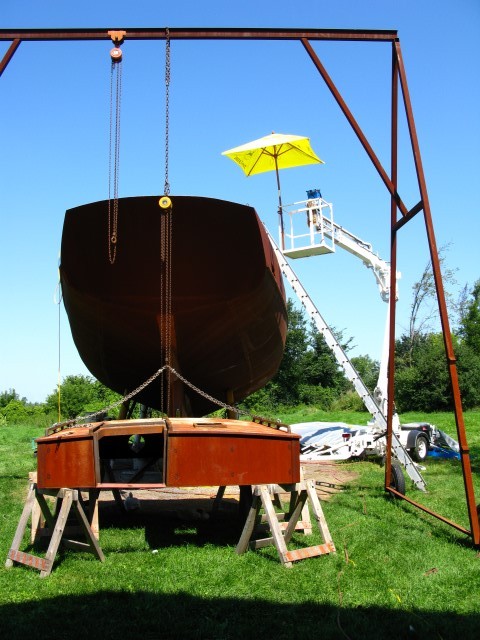
Here’s the cabin top off the boat again. Notice my nice sunbrella? It’s a John Deer Sunbrella, I love it!
Sandblasting in a confined area is one great way to make it hell. ” A boat hull is a confined area, not much to do about that ” you’ll say. Well, as we are building a reproduction of a traditional working sailboat which would originally have a big cargo hatch opening it right up, I figured I could take advantage of that feature. I designed the boat with the big cargo hold, which will be the living area, but instead of closing it with a cargo hatch it is a bolted down cabin top. For the sandblasting of the interior, we removed the whole cabin top and brought it off the boat, leaving it wide open. In the mean while, we will also sandblast and paint the cabin top in the shop.

Without the cabin top on we have a big opening to what would of been a cargo hold on a fishing boat.
A view from the inside without the cabin top.
Having the boat open does have the inconvenient of leaving the freshly painted surfaces exposed to the dew, so it does need to get covered up. Mark made this cool tarp roof out of aluminum hoops and lumber. The structure is very light and we can easily move it on and off the boat with our lift. We bring it down to to blast and paint and by dew o’clock we can’t whip it back on the boat.
Our very first time sandblasting we had rented a smallish size pot with not quite enough hoses to leave it on the ground. Do you know what that means? That means that we carried all our sand bags up the ladder to the pressure pot. We quickly smartened up on rented a bigger pot with longer hoses and reduced the amount heavy lifting. Never less we still moved too much sand around. To clean up the boat, all that heavy sand had to be brought back up out of the boat to be tossed over to the ground. I may still be strong but don’t need that kind of effort anymore; we’ve cut a big enough hole into the bottom of the boat to dump sand and pass the hoses through. I’m not to nervous anymore about cutting holes in my hull; when we are done the blasting it will only take me minutes to weld it shut and grind the outside welds smooth before getting painting.
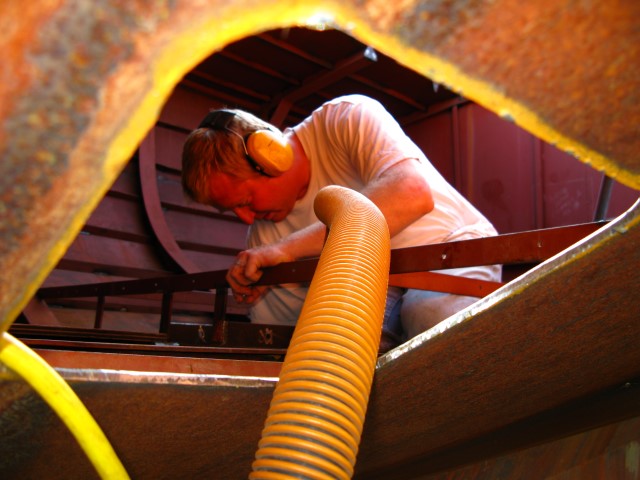
Sneaking a picture threw the hole in the hull.
Being smarter I would of cut that hole much sooner, it has been handy to pass tools over, bring extensions cords through and talk to each other without needing to get up on the boat. We could of saved a lot of leg energy. Oh well, live and learn.
